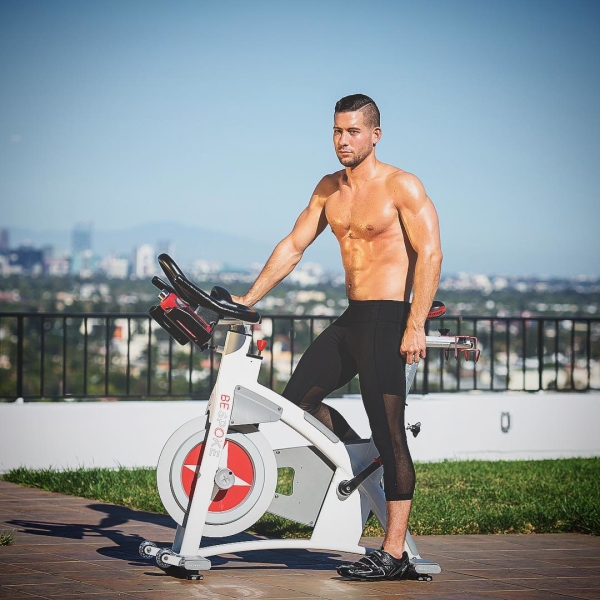I. Introduction

a. Importance of cycling instruction
Cycling instruction plays a significant role in promoting safe and enjoyable cycling experiences. With the increasing popularity of cycling as a mode of transportation, recreation, and fitness activity, the need for qualified cycling instructors has also grown. A cycling instructor not only teaches the fundamentals of cycling but also helps individuals develop essential skills, confidence, and knowledge to navigate various terrains, interact with traffic, and prevent accidents. By imparting proper cycling techniques and safety practices, instructors contribute to the overall well-being and sustainability of the cycling community.
b. Overview of the benefits and challenges of becoming a cycling instructor
Becoming a cycling instructor offers numerous benefits. Firstly, it allows individuals to combine their passion for cycling with a rewarding career. Moreover, it provides opportunities to inspire and empower others to adopt cycling as a lifestyle choice, leading to improved fitness, health, and reduced environmental impact. Additionally, being a cycling instructor enables personal growth and learning as instructors continually update their knowledge, refine teaching techniques, and interact with diverse individuals. Despite the advantages, there are some challenges associated with becoming a cycling instructor, such as obtaining certifications, building experience, and managing the demands of teaching different skill levels. However, overcoming these challenges can lead to immense satisfaction and a fulfilling career.
II. Requirements and Qualifications
a. Obtaining a cycling instructor certification
To become a certified cycling instructor, individuals must complete a recognized training program. Organizations like the League of American Bicyclists and Cycling UK offer instructor certification programs that cover topics like teaching methodologies, cycling safety, traffic interaction, and education strategies. These programs typically consist of both theoretical and practical components, including classroom instruction, riding demonstrations, and assessments.
b. Acquiring necessary first aid and CPR certifications
In addition to cycling instruction certifications, it is essential for cycling instructors to obtain proper first aid and CPR certifications. These certifications ensure that instructors are prepared to handle any medical emergencies that may occur during cycling classes or rides. Organizations like the American Heart Association and the Red Cross offer comprehensive first aid and CPR courses that cover topics such as CPR techniques, injury management, and basic life support.
c. Demonstrating experience and knowledge in cycling
To become an effective cycling instructor, it is crucial to have a strong background in cycling, including both practical experience and theoretical knowledge. Instructors should have extensive experience in various cycling disciplines, such as road cycling, mountain biking, or commuting. They should also possess a deep understanding of bike handling techniques, traffic laws, cycling gear, and equipment. Demonstrating expertise and competence in cycling through personal experiences, participation in cycling events, and continuous learning helps establish credibility and instill confidence in students.
III. Developing Teaching Skills
a. Learning effective communication techniques
Effective communication is crucial in teaching cycling. As an instructor, it is essential to clearly convey instructions, suggestions, and feedback to ensure that all participants understand and can follow along. To develop effective communication skills, consider the following techniques:
- Use clear and concise language: Avoid technical jargon or complex terminology that may confuse participants. Use simple and understandable language to ensure clarity.
- Use visual aids: Visual aids such as diagrams, charts, or images can effectively clarify concepts or techniques. Incorporate these aids into your lessons to enhance understanding.
- Actively listen: Listening to participants is key to understanding their needs, concerns, and progress. Encourage open communication by creating a supportive and safe environment where participants feel comfortable sharing their thoughts and asking questions.
- Provide constructive feedback: When providing feedback, focus on specific areas for improvement and offer solutions or alternatives. Constructive feedback should motivate and encourage participants to enhance their skills rather than discourage them.
b. Understanding different teaching styles and adapting to various learners

Every individual has a unique learning style, so it is essential to understand different teaching styles and adapt your approach to accommodate various learners. Consider the following teaching styles:
- Visual learners: Visual learners grasp information best through visual aids such as diagrams, videos, or demonstrations. Incorporate visual elements into your lessons to cater to this style.
- Auditory learners: Auditory learners prefer verbal explanations and discussions. Ensure that you explain concepts clearly and offer opportunities for participants to ask questions or engage in group discussions.
- Kinesthetic learners: Kinesthetic learners learn best through hands-on experiences. Incorporate practical activities and practice sessions into your lessons to provide these learners with opportunities to apply their skills physically.
- Verbal learners: Verbal learners learn best through written or spoken words. Provide clear and comprehensive written instructions and handouts to assist them in understanding the information.
c. Designing lesson plans and organizing cycling classes
Designing well-structured lesson plans and organizing cycling classes are vital for effective teaching. Follow these steps to create comprehensive and engaging lesson plans:
- Define objectives: Start by establishing clear objectives for each class. Identify what skills or knowledge participants should acquire by the end of the session.
- Break down the lesson: Divide the lesson into manageable segments, ensuring a logical progression of skills and concepts. Create a timeline or outline to guide you through the class.
- Include warm-up and cool-down activities: Begin each class with a warm-up to prepare participants physically and mentally for the main activities. End the class with a cool-down to gradually lower the heart rate and stretch muscles.
- Incorporate variety: Include a variety of activities such as drills, games, group work, and individual challenges to cater to different learning preferences and maintain participants’ motivation and engagement.
- Assess progress: Include assessment opportunities throughout the class. This can be in the form of individual or group evaluations, quizzes, or practical demonstrations. Assessments help measure participants’ progress and identify areas that may need further attention.
IV. Building Cycling Knowledge and Skills
a. Regularly participating in cycling activities and events
As a cycling instructor, it is essential to continuously build your own cycling knowledge and skills. Actively participate in cycling activities and events to enhance your understanding and experience. Consider the following activities:
- Join group rides: Participate in organized group rides to explore different cycling routes, meet other cyclists, and learn from their experiences. Group rides can also help improve your cycling skills and endurance.
- Attend cycling workshops or clinics: Look for workshops or clinics focused on specific aspects of cycling, such as downhill riding techniques, climbing skills, or bike maintenance. These events often bring together experienced cyclists who can share their knowledge and expertise.
- Challenge yourself: Sign up for cycling challenges or races to push your limits and improve your performance. Setting personal goals and striving to achieve them can enhance your cycling knowledge and skills.
b. Enhancing knowledge of bike maintenance and repairs

Being knowledgeable about bike maintenance and repairs is essential for a cycling instructor. Regularly update your knowledge and skills in this area to ensure the safety and functionality of the bikes used in your classes. Consider the following ways to enhance your knowledge:
- Attend bike maintenance workshops: Look for workshops or courses that focus on bike maintenance and repairs. These workshops often cover topics such as basic bike maintenance, fixing common issues, and bike fitting.
- Consult experts: Reach out to local bike shops or experienced cyclists for advice and guidance on bike maintenance and repairs. They can offer valuable insights and help you develop your skills.
- Stay updated on industry developments: Keep up with the latest advancements in bike technology and maintenance practices. Read cycling magazines, online forums, and manufacturer’s guidelines to stay informed.
c. Staying updated on cycling safety rules and regulations
Cycling safety is of utmost importance, so it is crucial to stay updated on the latest safety rules and regulations. Prioritize your own safety and the safety of your participants by incorporating these practices:
- Research local cycling laws: Familiarize yourself with the cycling laws and regulations in your area. Understand the requirements for cycling on public roads, cycling paths, and other designated areas.
- Stay informed on safety equipment: Keep up with advancements in safety equipment such as helmets, lights, and reflective gear. Advise your participants on the importance of wearing appropriate safety gear and conducting regular safety checks on their bikes.
- Continuously update your knowledge: Stay informed on new safety guidelines by attending workshops or seminars, reading safety publications, or consulting local cycling authorities. This will ensure that you are providing the most up-to-date information to your participants.
V. Gaining Teaching Experience
a. Volunteering at cycling clubs, organizations, or community centers
Volunteering at cycling clubs, organizations, or community centers is a great way to gain teaching experience. Consider these opportunities:
- Coach or assistant coach: Volunteer to assist experienced coaches or instructors during their cycling classes or training sessions. This will provide you with hands-on experience and allow you to learn from seasoned professionals.
- Event support: Help out at cycling events or races by volunteering as a course marshal, start/finish line coordinator, or aid station volunteer. These events provide opportunities to observe seasoned instructors and interact with participants of various skill levels.
- Youth programs: Many cycling clubs and organizations offer youth programs or cycling camps. Volunteer to assist with these programs and gain experience teaching younger riders.
b. Assisting experienced cycling instructors in classes or workshops
Assisting experienced cycling instructors in their classes or workshops is another valuable way to gain teaching experience. Here’s how:
- Reach out to instructors: Contact local cycling clubs, organizations, or fitness studios and express your interest in assisting experienced instructors. Offer your services and explain your willingness to learn from them.
- Observe and learn: During your time assisting, observe the instructor’s teaching style, how they interact with participants, and their management of group dynamics. Pay attention to effective communication techniques and teaching strategies.
- Take on small teaching responsibilities: As you gain more experience and build trust with the instructor, take on small teaching responsibilities such as leading warm-up activities, demonstrating specific techniques, or providing individual feedback.
c. Conducting practice sessions or mock classes with friends or acquaintances
Conducting practice sessions or mock classes with friends or acquaintances is a practical way to apply and refine your teaching skills. Follow these steps:
- Plan a practice session: Design a practice session that focuses on specific skills or techniques. Consider the abilities and goals of your participants and tailor the session accordingly.
- Gather a small group: Invite friends or acquaintances who are interested in cycling or improving their cycling skills to participate in the practice session. Communicate the objectives and expectations of the session.
- Lead the session: As the instructor, guide the participants through the planned activities and provide feedback and assistance as needed. Observe their progress and adjust your teaching approach to ensure understanding and engagement.
- Seek feedback: After the session, ask participants for their feedback on your teaching style, clarity of instruction, and overall experience. Take note of their suggestions and make necessary adjustments to improve your teaching skills.
By following these steps and consistently working on developing your teaching skills, building cycling knowledge, gaining teaching experience, and prioritizing safety, you can become an effective and knowledgeable cycling instructor. Remember that teaching is an ongoing learning process, so always seek opportunities to grow and improve as an instructor.

